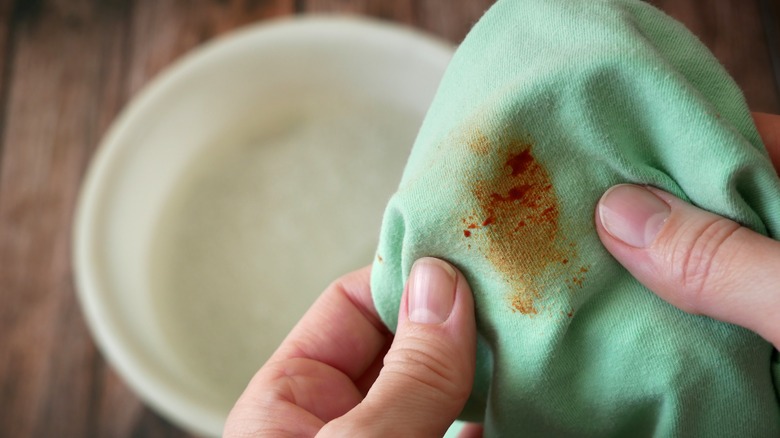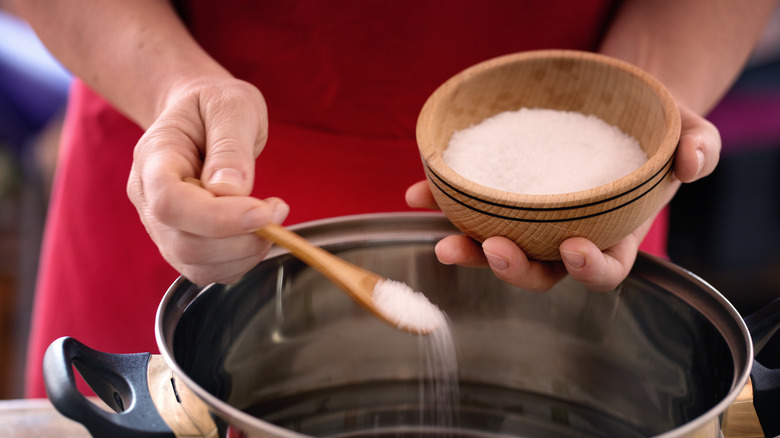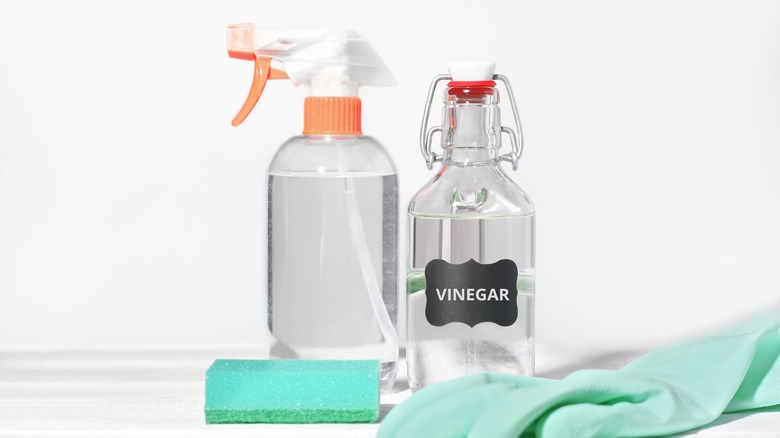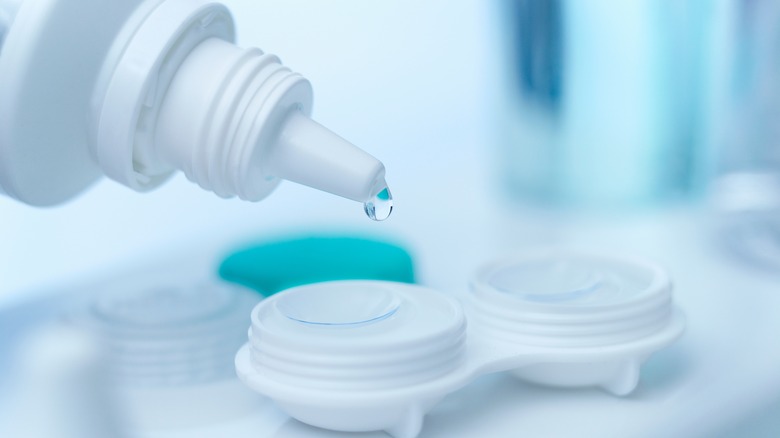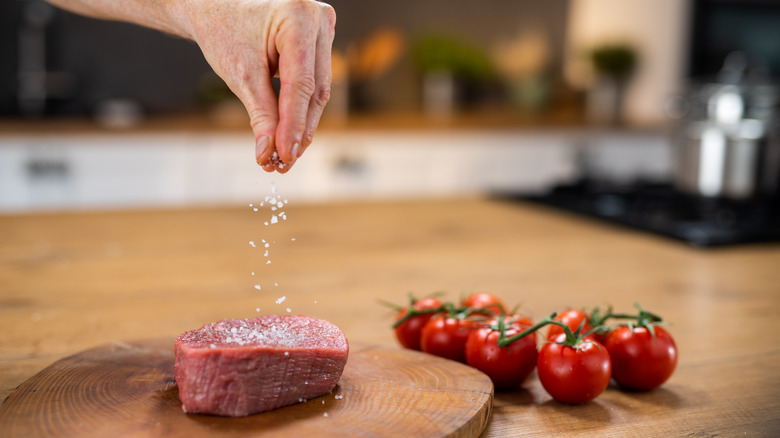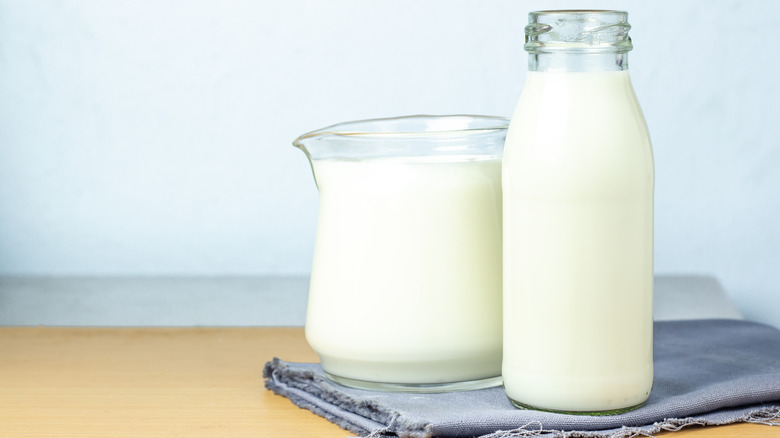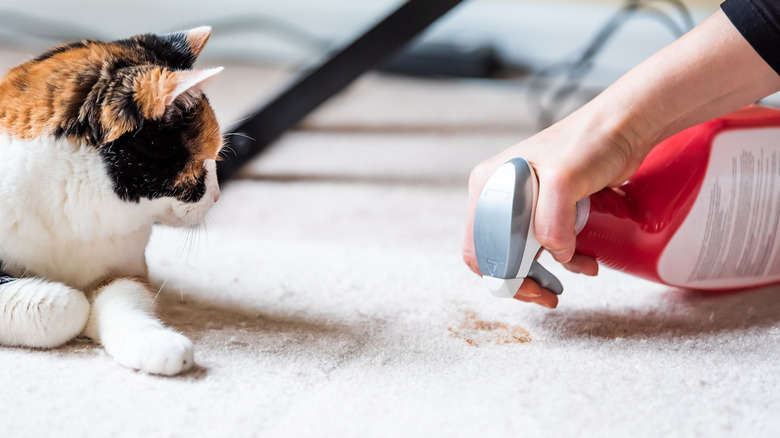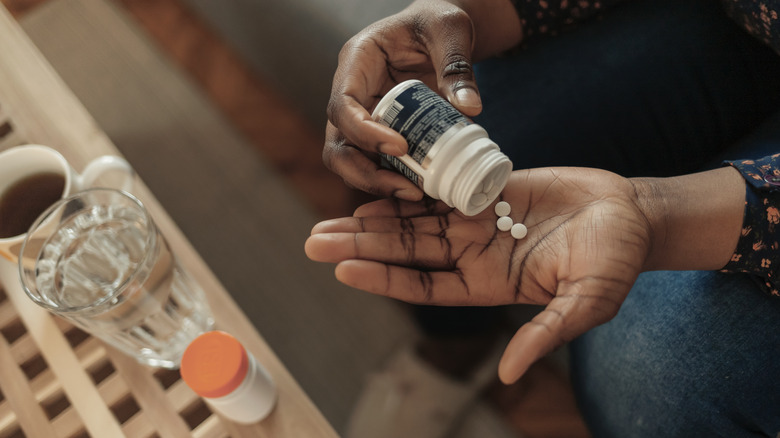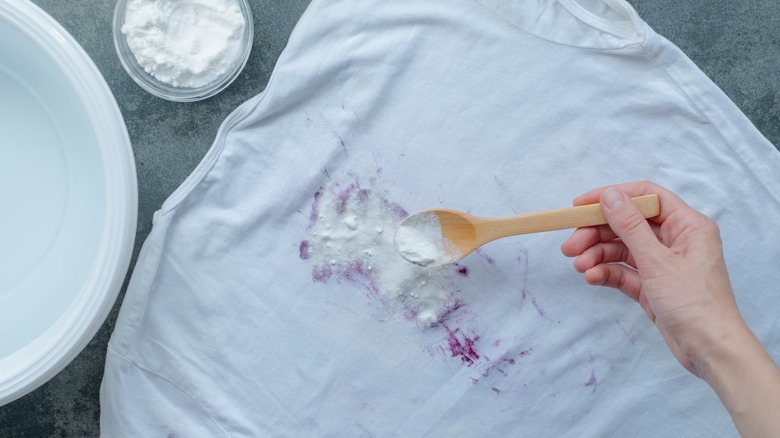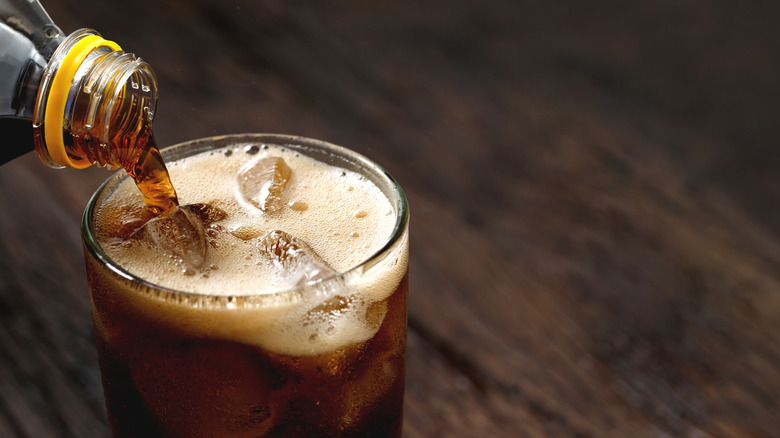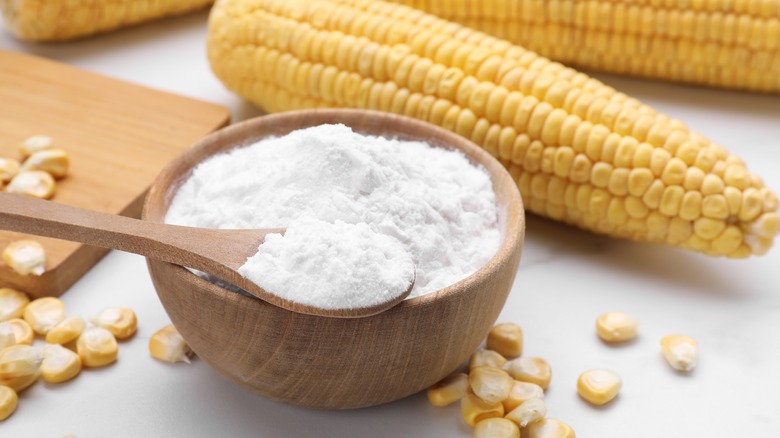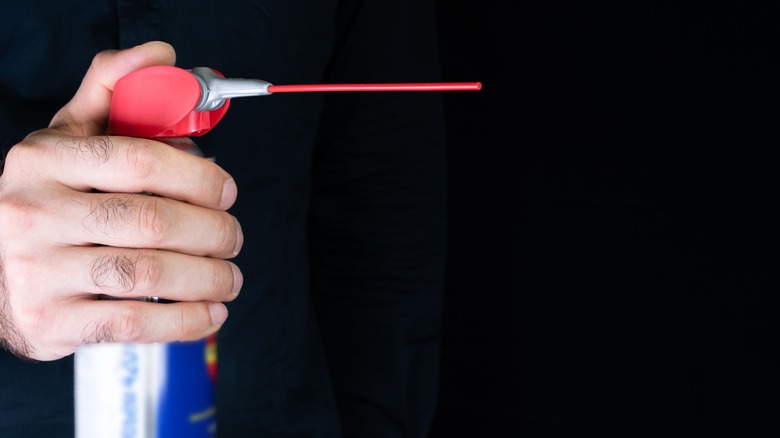11 Unexpected Household Products That Clean Blood Stains
No matter how careful you are while cooking or working in the shed, accidents happen. Even a small nick can produce a decent amount of blood that can drip onto your clothes, furniture, or other surfaces. Don't panic! Well, you can panic about the cut, but no need to worry about the clean up. Although blood is notorious for being difficult to remove, there are many ways you can get rid of the stain. Using hydrogen peroxide is the most well known removal trick, but what happens if you don't have any on hand? The quicker you get to work on a blood stain the better success you will have, so knowing what common household products to reach for can be the difference between your favorite shirt looking good as new or having to be thrown out.
One thing to remember when removing blood is to wear gloves, especially if the blood is not yours, to prevent the spread of any pathogens or bacteria. This is important for your personal health and hygiene, but will also protect your hands from any of the stain removal products that might cause skin irritation. Do not ever use hot water on a blood stain since this will set it in the fabric — always use cold. Facing that bright red spot on your favorite linen isn't a futile effort, here are unexpected ways to clean up blood stains using products you likely have around your home.
Salt
Knowing how to use salt to remove blood stains is a handy trick since salt can be found almost anywhere out in public. If you are traveling or at work, it is likely that you can quickly snag a salt packet from a nearby coffee shop or fast food joint and get to work on removing the stain. Salt is a great cleaning agent because it has dehydrating properties. Just think about how thirsty you feel after eating a whole bag of chips! As the salt naturally dehydrates the blood, the stain that was once bound to the fabric will be broken down and lifted. This makes it easier for the soap or laundry detergent to wash it away.
You'll want to use the salt to form a paste by mixing it with small amounts of cold water until the paste is thick, but spreadable. Rub this paste directly on the stain then let it sit for 10 to 20 minutes. Just make sure that the paste is dry. Then scrape off the salt and rinse with cold water. Launder as usual and the stain should be lifted. If not, you can repeat the process or try out another removal method.
White vinegar
Everyone's favorite cleaning superstar has yet another versatile use. Although white vinegar probably won't remove the entire stain on its own, it is helpful to break down the stain enough so that it can be more easily washed away with detergent. This is because vinegar contains acid, the compound responsible for its cleaning power. The acid helps to break down the protein in the blood. These hemoglobin proteins bind together when exposed to air, making them more difficult to remove. This is also why you should never use hot water when trying to remove blood since heat will also cause the proteins to bind together more, further setting the stain.
So grab your trusty container of white vinegar and pour it over the stain. Be generous and saturate it fully. Let the vinegar soak in and work its magic for about 10 minutes, then carefully blot, don't rub, the stain. Dab away as much vinegar and blood as possible. At this point, the stain won't be gone, but it should look a bit improved. Then wash in cold water as soon as possible to prevent the stain from setting again.
Saline solution
If you wear contacts, it's likely that you have a bottle of saline solution in your bathroom. Typically used to rinse off contact lenses before inserting them into your eyes, it can also be used to help lift out blood stains in a pinch. This is because of the high salt content in the saline solution, which, as previously explained, works to dehydrate the stain, making it easier to lift. This method might be a better option if you're on the go or in a rush, since you can pour the saline solution directly on the stained garment, as opposed to having to spend time making a paste.
Take the stained garment and fully saturate the affected area with saline solution. Rub it into the fabric and let it sit for a few minutes so the salt can work its magic. Then rinse the garment with cold water and repeat the process if needed. Once it looks like the stain is starting to lift, throw the garment in the washer with your favorite detergent and launder as normal.
Meat tenderizer seasoning
No, we don't mean you should start hitting your clothes with a big metal mallet. But if you have a container full of meat tenderizing seasoning sitting in your cabinet, it might just be the thing that saves your blood stained garment. This product works because the powder is created with enzymes that break down the protein in meat, making your steak tender and easy to cut through. But it also will break down the protein in blood, making it less bound to the fabric and easier to lift.
You want to make sure you are using unseasoned meat tenderizer, otherwise the mixed in spices could create another stain. Start by making a paste with the unseasoned meat tenderizer and cold water. Fully saturate the stain with this paste and let it sit for 30 minutes. Rinse off the paste and launder as usual. Some say that because this method attacks the protein bonds directly, it works well even on older stains, though we haven't verified this claim.
Milk
This easy and budget-friendly way of removing a blood stain will help you go through that gallon of milk before it goes bad. But save that oat milk for a latte, because for this trick to work you need real dairy milk. This is because the enzymes and proteins in it will help break down and lift the blood, making it easier to clean. You can use whole milk, 2%, or non-fat — all will work well to help ease the stain.
First you should rinse the stain with cold water, getting out as much blood as you can. Then soak the affected item in your sink or a bowl filled with milk. It's important to leave the item to soak for a few hours, or ideally overnight, so that the milk can lift as much of the stain as possible. After the item is done soaking, wring it out and wash as you normally would. How much the stain lifts will depend on the fabric and how old the stain is, but the milk will certainly help more than detergent alone.
Pet stain remover
Many pet stain removers, like this formula from Nature's Miracle, are enzymatic stain removers, which is a type of product that uses plant enzymes to break down organic waste, stains, odors, and mold. Blood counts as an organic stain, so although it isn't a pet related mess, an enzymatic pet stain remover will be especially well-formulated to break down blood compared to a standard cleaner. They are also typically good at controlling odor, another benefit of using this product on stains.
First, rinse out as much of the stain as possible with cold water. Then, fully spray the affected area with the pet stain remover. Be generous and don't be afraid to saturate the material. Let it sit for an amount of time indicated by the instructions on the bottle. If you want even more stain fighting power, use a laundry brush to scrub the stain. Laundry brushes, like this one from The Laundress, have dense bristles that can help lift the stain more than scrubbing with your hands or a cloth could. A laundry brush can be used with other types of stain removing methods as well, making it a versatile tool if you have an accident-prone family. Once the pet stain treatment is done, wash as usual in cold water.
Aspirin
Pop an aspirin to get rid of your headache, then grab another one to fight blood stains (or to help treat your lawn). A bottle of aspirin is something many people have in their medicine cabinets, and with just a few capsules, you can greatly reduce the chance of blood causing a permanent stain. While aspirin might be a little pricier than some of the products on this list, if you can spare a few in a pinch, it will be worth it.
You'll want to start with uncoated aspirin and crush up the capsules until you have 1 to 3 tablespoons of powder, depending on the size of your stain. Mix it with about ⅓ cup of water to form a watery paste and spread it around the stain. You can rub it in with a laundry brush or an old toothbrush, if you want to use something you can throw away in case any blood residue gets on it. Let the paste dry. Once it is fully dry, scrape off the paste and launder in cold water as normal.
Baking soda
Baking soda is a known powerhouse cleaning ingredient, and it once again comes in handy if you're tackling a bloody mess. This is a great method since most people have some baking soda in their cleaning arsenal, or even a box sitting in their fridge to absorb odors that you can crack into in a real emergency.
Like with other ingredients on this list, you'll want to go the route of making a paste. How much paste you make depends on the size of the stain, but you'll want to use a ratio of two parts baking soda to one part water. This will ensure that the consistency is spreadable without being too runny. Apply the paste to thoroughly cover the stain and leave it for 30 minutes. After the time is up, carefully blot (don't scrub!) the paste away. Repeat this process if needed, then wash as normal. The baking soda treatment should give an extra boost to help remove the blood with no lingering discoloration.
Coca-Cola
A can of Coca-Cola might be the secret to success when trying to get rid of a stubborn blood stain. While the soda won't lift the stain to the extent that bleach would, it will help make the stain easier to remove. This is especially useful if you are out and about when a nosebleed hits — picking up a can of Coke and using it to soak the stained portion of your item as soon as possible will increase your chances of being able to wash it out once you're home.
Whether you're at home or traveling, you can also soak the affected item in Coke overnight to help lift the stain before washing. With this method, you will want to stick with treating dark colored clothes only. If you use it to treat a white item, even if the blood stain is lessened, you run the risk of the dark colored soda creating a new stain. After your item is done soaking, wash as normal to remove the remainder of the blood stain, but also any stickiness left over from the drink.
Cornstarch
Cornstarch is typically used to thicken soups and sauces, making it a staple for any home cooks. But did you know that in the 1800s it was actually invented for use in laundry? Therefore, it's no surprise that cornstarch has other household cleaning uses. Cornstarch is affordable and often sold in large quantities, making it easy to borrow a scoop or two to tackle a blood stain.
Take a few spoonfuls of cornstarch and slowly mix in cold water until a paste forms. Be careful not to make it too runny since we want to be able to isolate it over the stain. Then generously coat the blood stained area, making sure to cover both sides of the fabric if the stain has seeped through. Wait until the paste is fully dry. The amount of time you'll have to wait depends on how big the stain is and how much paste you used. Brush off the dried paste with your hand, an old toothbrush, or laundry brush. Wash in cold water and your item should be looking good.
WD-40
If you got too ambitious working in the garage and nicked your hand, grab that can of WD-40 as you go rushing out. Everyone's favorite solution to squeaky hinges will also help save your clothes from a dark blood stain. The secret to success is to act fast and use the spray as a pre-treatment before the stain can set in. The ingredients in WD-40 will help break down and lift up the stains. These same properties are helpful in preventing the blood from setting into the fabric and staining it in the first place.
Grab your can of WD-40 and get to work on that spot. The can's nozzle design allows for precision application, which is helpful if you are dealing with sensitive fabrics you don't want to expose to more WD-40 than you need to, or if you want to spot treat a carpet stain. Spray the fluid all over the stain, making sure it is fully saturated. Let it sit for a few minutes then blot away. If the stained item can be put in the washer, toss it in and clean it on cold. If it is on the floor or furniture, wipe with a cool, damp rag. Because WD-40 is essentially an oil, think carefully before you apply about whether it will damage the item and cause more harm than good.
